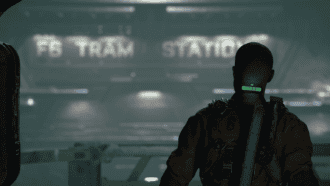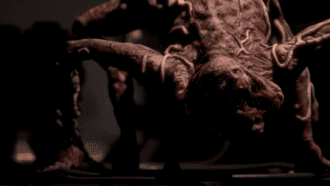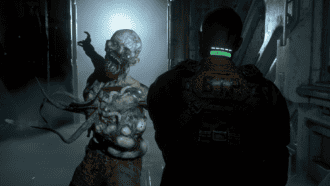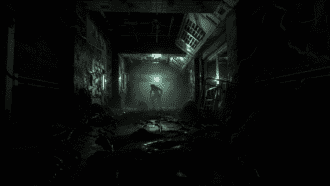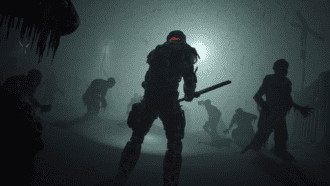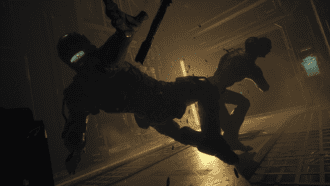Platforms:
Xbox One, PS4, PC, PS5, Xbox Series X|S
Released:
December 2, 2022
Publisher:
Krafton
Developer:
Striking Distance Studios
Creating a spiritual successor to one of the most loved horror video games of all time is a tall task, but if anybody could do it, it’s developer Striking Distance Studios. A new team created by industry veteran Glen Schofield, who is credited as one of the creators of the original Dead Space, have created another horrific adventure, this time with The Callisto Protocol. While this is the first game from this team, you wouldn’t think that by looking at it; visually impressive and visceral with its gory, crunchy combat, it consistently unnerves and forces you into some intense, claustrophobic moments.
Despite obvious successes, a distinct lack of variety and innovation in its combat scenarios leaves The Callisto Protocol as merely a neat – and pretty well made, mind you – homage to Dead Space, without carving out enough of its own fresh ideas to truly sink your teeth into.
Set well in the future in the year 2320, you play as Jacob, a transporter that finds himself trapped in a maximum-security prison located on Jupiter’s dead moon, Callisto. As inmates start turning into terrifying creatures, you’ll have to uncover the mystery of what’s going on and try to escape in one piece. It’s pretty standard sci-fi horror fare for the most part, but it’s elevated by performances from Josh Duhamel and Karen Fukuhara in particular, who add a bit more character depth to the spooky story of a strange virus that has clearly gone too far, with some twists and turns along the way.
What The Callisto Protocol absolutely nails is the atmosphere throughout. It’s truly unnerving navigating your way through an unfamiliar spacecraft, with impressive visuals really backing that up. Photo-realistic characters really bring the cast to life, and the lighting and little details make the gnarly environment pop. Sure, ‘dark and broody spaceship’ doesn’t give a lot of opportunity for visual flourishes at times, but the universe feels very much lived in (and died in). Creature design is awful, in the best way, with lots of fleshy, gross oozing bits sure to bring a smile to the face of any monster-loving aficionado.
“…monsters in particular sound truly disgusting as their flesh drags around and fleshy sacks pulse on the walls.”
You’ll hear creatures scuttering through the ventilation shafts, see bits of bodies scattered around the place in a gruesome fashion, and watch as lights flicker, creating unsettling shadows. It’s awful turning around every corner, not knowing what is waiting for you, and it ensures you’ll always be on the edge of your seat. I didn’t find it as “fall off the couch scary” as its inspiration, but there are plenty of classic horror moments, like turning around to find grotesque monsters waiting for you up close, or seeing a corpse get promptly dragged off-screen by an unknown entity.
It’s all punctuated by strong sound design, with the monsters, in particular, sounding truly disgusting as their limbs drag around and fleshy sacks pulse on the walls. The creepy and foreboding music keeps you on your toes, the whirring of industrial fans is loud and uneasy, and the audio sounds crunchy and impactful when you’re cracking an enemy’s head open or squishing them to bits with a well-placed stomp. While it might not make you scream, it will certainly make you uncomfortable, especially when you’re forced into close quarters.
A combination of combat and light exploration keeps The Callisto Protocol moving along at a relatively brisk pace. Early on, melee is the aim of the game, with dodging done by simply alternating between moving the left stick left and right. There is no traditional “dodge” button, so if you’re looking to create distance between enemies, you’ll simply need to run backwards, which can be clunky, but it often means you’re forced to go face-to-face with the horrors that await you, and that keeps the tension high.
You’ll eventually access better weaponry, which you can 3D Print once you find the schematics. Ammunition is scarce so resorting to melee, especially in one-on-one scenarios, is definitely the preference. The guns can be incorporated into combos, and you can get into a decent rhythm of dodging, smacking enemies upside the head, and then quickly taking a shot at them for extra damage. It feels crunchy and satisfying smashing them to a pulp, and it’s always tense as a couple of blows from them can kill you.
Melee combat suffers however when there are multiple enemies on screen at once. If a foe is directly behind you, they’ll take cheap pot-shots, rendering the left to right dodging to be less “floating like a butterfly” and more “flailing like an idiot”. They can also randomly grab you, forcing you to mash a button, which can be annoying. The enemies themselves vary in attack patterns, but mostly if you nail the dodge timing you’ll be okay, with some exceptions like armoured creatures or others that spit at you from a distance.
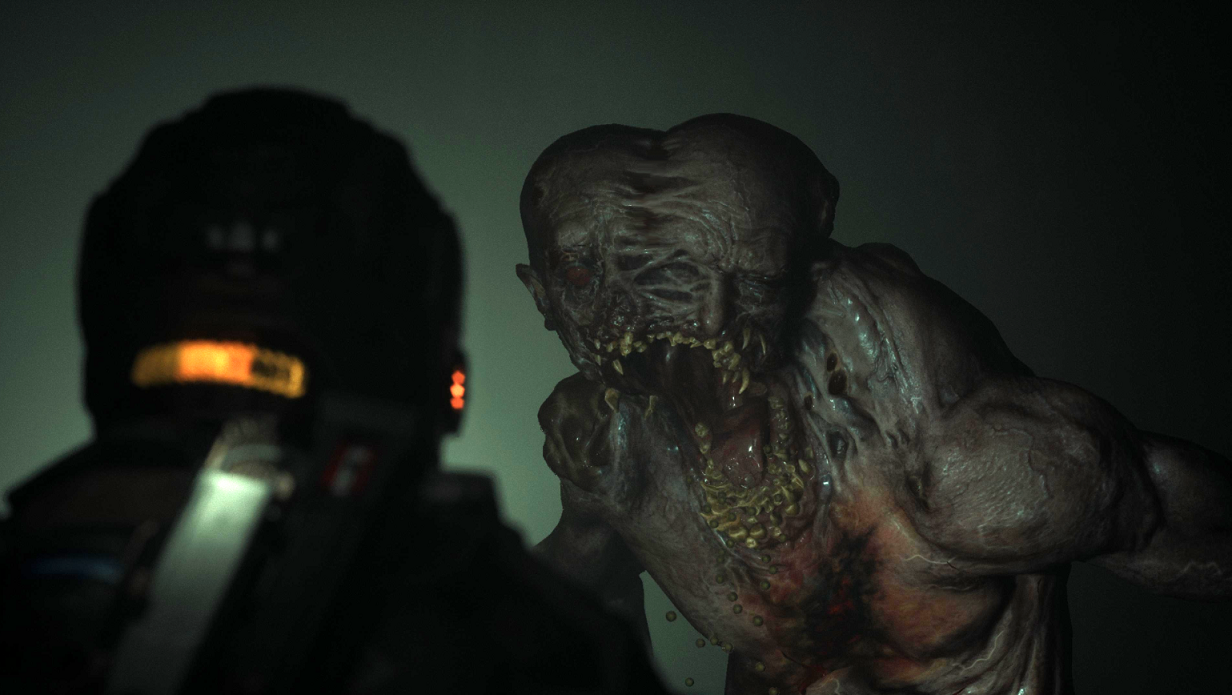
Luckily, there are some tools that come into play that give you the opportunity to create distance when dealing with groups and also be a bit creative with your approach. The GRP device allows you to pull enemies close to you before swiftly flinging them in whatever direction you’re aiming. Most combat rooms are littered with hazards, such as spikes on the walls, fast-whirring turbines, or giant fans. Throwing an enemy into any of these hazards results in an instant kill, so it’s a smart way to clear a room quickly. You can also throw enemies into one another or chuck explosives at them for maximum damage. The GRP needs to charge so it’s not available to use constantly, but it’s handy and satisfying turning creatures to paste by using the dangerous environment to your advantage.
Additionally, The Callisto Protocol takes another cue from Dead Space when it comes to lopping off body parts to create an advantage. You can smash off arms of enemies, limiting their attacks, or even take out their legs which forces them to crawl with their hands. Somewhat comically, even removing their head sometimes isn’t enough, as the body will still make an effort to attack afterwards.
“…it’s handy and satisfying turning creatures to paste by using the dangerous environment to your advantage.”
While satisfying at first, combat does tend to get a little monotonous as the game progresses. It suffers more in the later stages, where battles are in larger areas and simply drop more and more enemies into the space, forcing you to multitask and juggle, which is not the easiest with a slow-moving protagonist. One particular tough late-game enemy gets thrown at you more than once, making for a frustrating challenge given they can take you down with one strong hit. It’s quite a linear affair as you move from battle to battle, without much going on in-between aside from the odd hidden room or locked door.
The exploration on offer isn’t exactly thrilling. Straying off the linear path can often lead to some more Callisto Credits to go towards your next upgrade, or some rare items to sell, but you’ll mostly be moving through similar-looking areas, exhausting every direction you can to fill your inventory. When it comes to progressing through to different zones, they’re often blocked by a door that needs a power cell, a switch that needs flicking elsewhere, or a keycard that needs to be snatched from the corpse of a guard. These roadblocks provide distractions and more combat areas to take on, but they feel like minor inconveniences rather than anything truly puzzling to solve. It would have been nice to see some variety outside of this, as it leaves The Callisto Protocol almost entirely focused on atmosphere and combat, which can get repetitive without any sort of reprieve.
The other unavoidable thought that kept creeping into my mind as I played The Callisto Protocol is that it really does feel a lot like Dead Space, which is a big compliment, but is also to its detriment. There are so many similarities to the look and feel of this scary adventure that it’s hard not to shake the feeling that they could have gone further on the innovation side. Removing limbs so that enemies are handicapped as they approach just doesn’t feel as good as the Plasma Cutter line gun.
I don’t mean to harp on this point; Dead Space is one of my favourite horror games, and I found The Callisto Protocol to do an admirable job of replicating its best parts. But I was hoping for some more spins on the formula to set it apart. As it stands, this is a horrific love letter and a decent franchise foundation. I hope that from here the team at Striking Distance Studios truly strike out on their own to make some meaningful, effective differences in a sequel.
7.5
Good
Positive:
- Intense atmosphere keeps you on your toes
- Satisfying, visceral combat packs a punch
- Impressive, horrific visuals throughout
Negative:
- Melee combat can be clunky against multiple foes
- Not much gameplay variety beyond combat
- Lacks in creativity and innovation
An intense atmospheric adventure with an intriguing premise, The Callisto Protocol delivers a solid horror game that focuses largely on its satisfying combat. It doesn’t have much variety and is lacking a bit of creativity, but it makes up for that with impressive visuals and disgusting, intimidating monsters. It might not meet the expectations of its obvious inspirations, but The Callisto Protocol lays a strong foundation of terrifying atmosphere and crunchy combat that makes it satisfying and spooky nonetheless.


